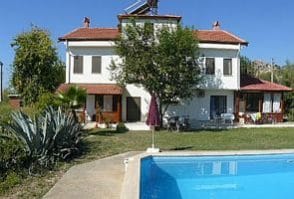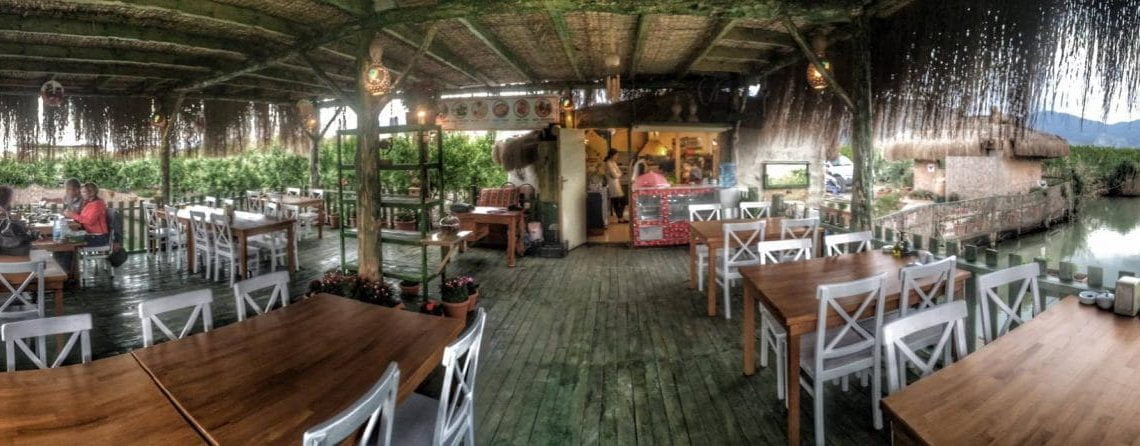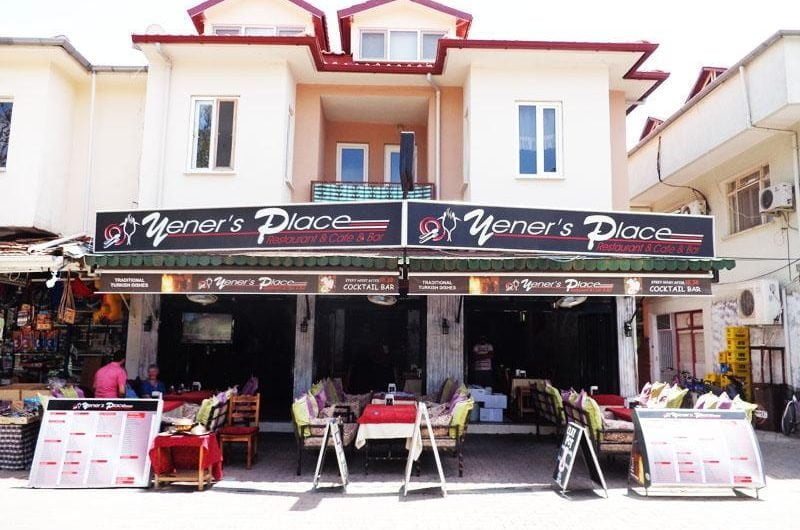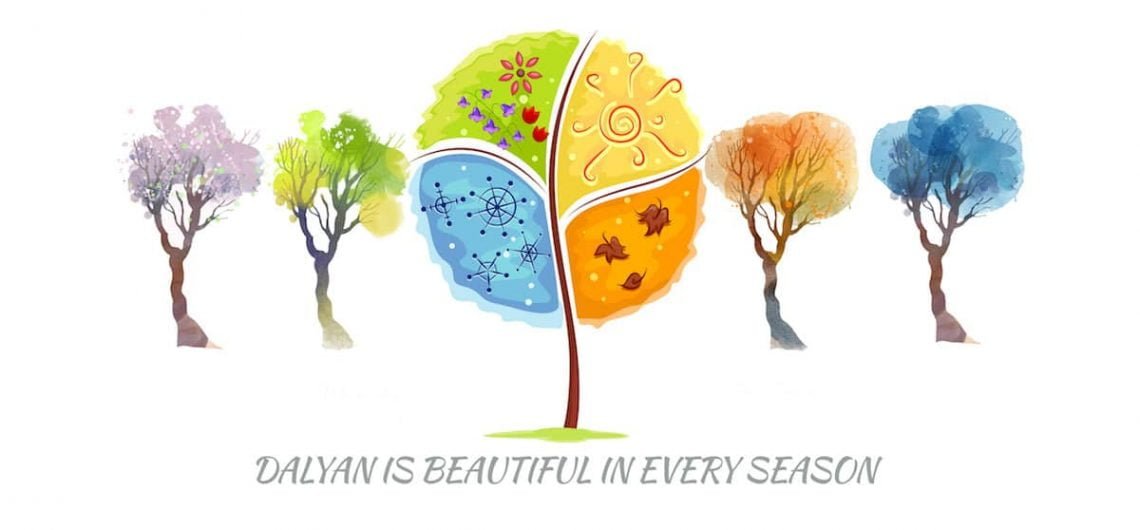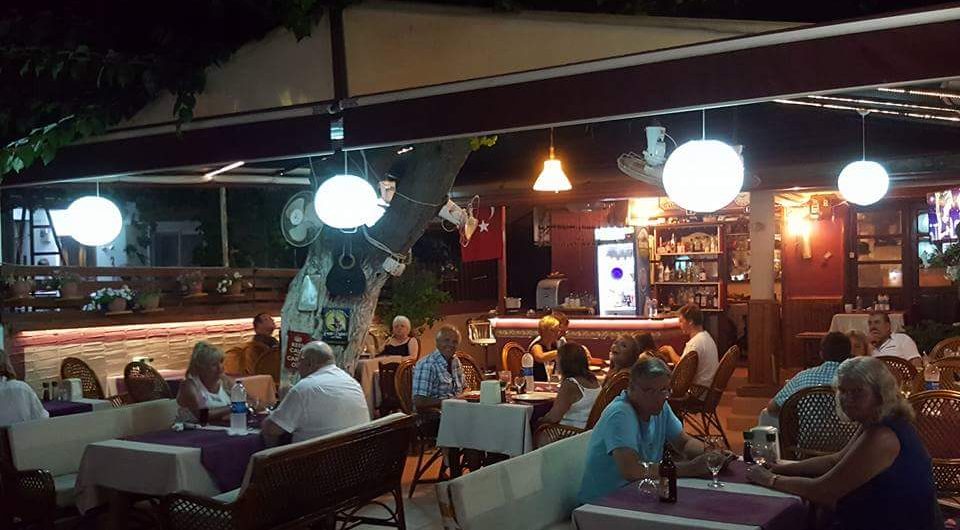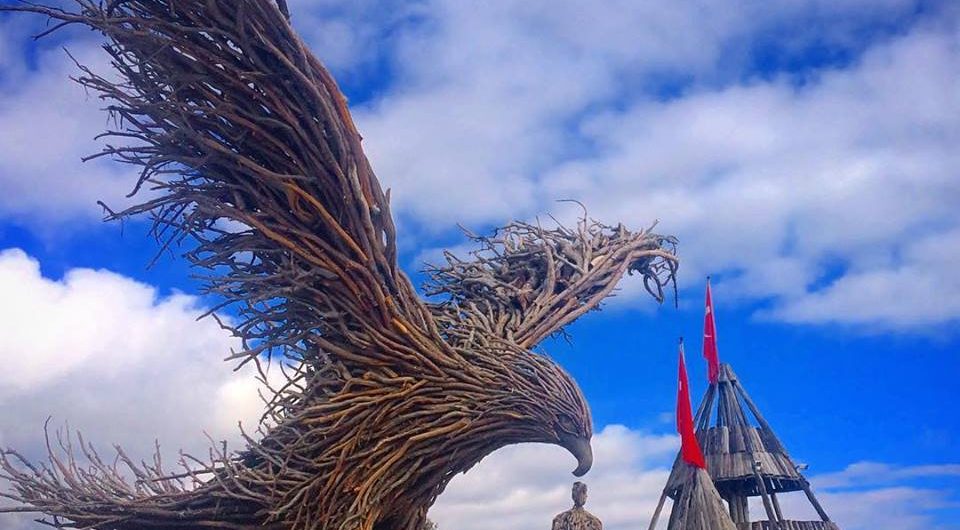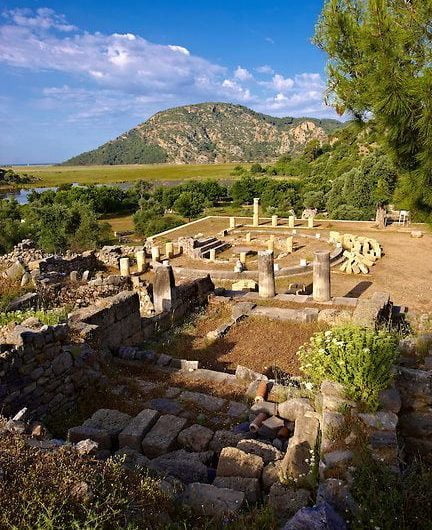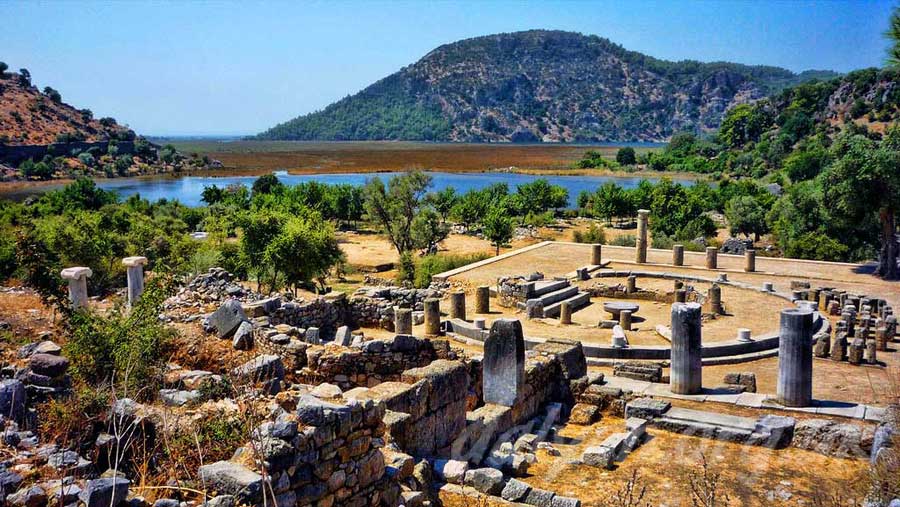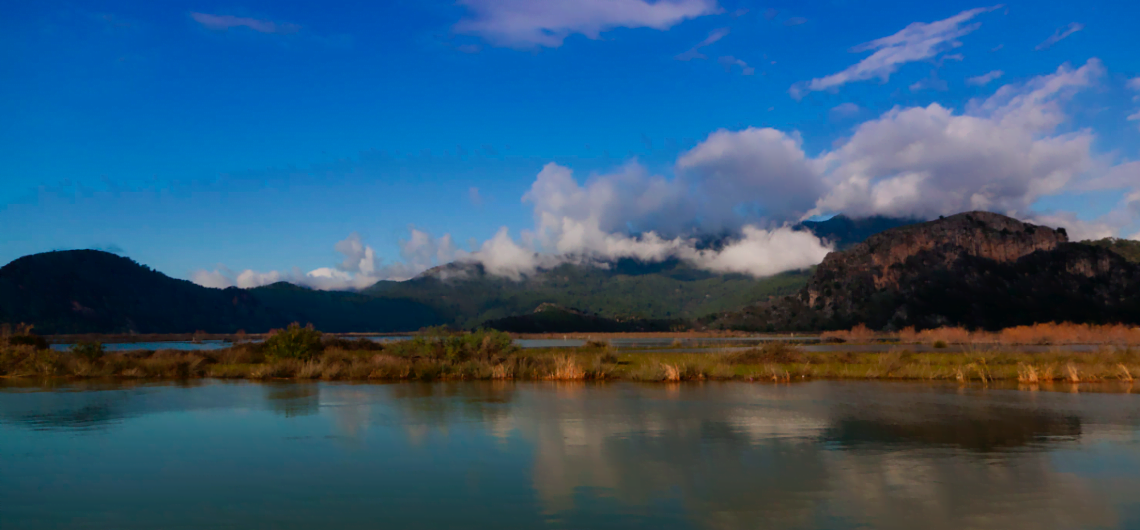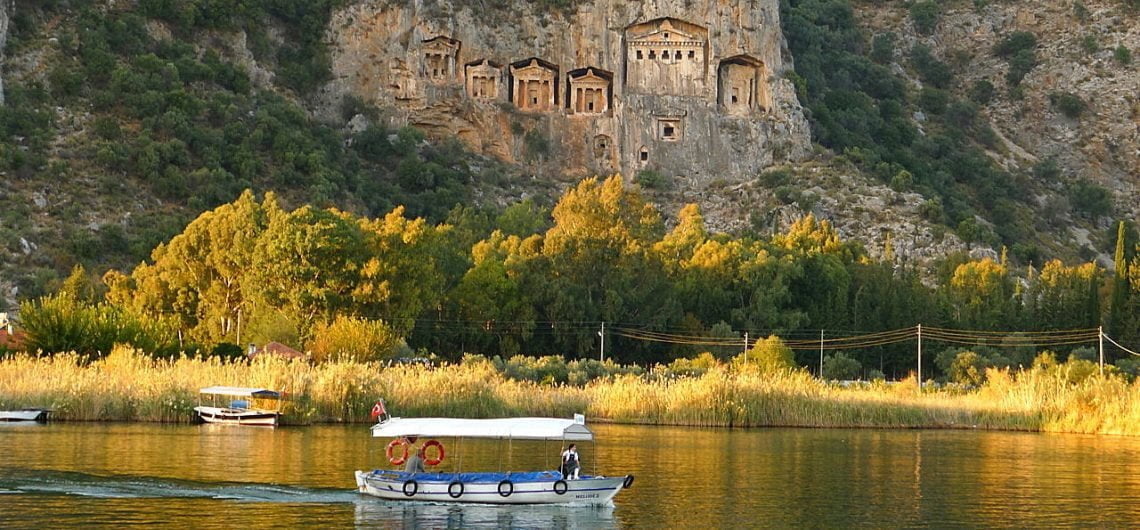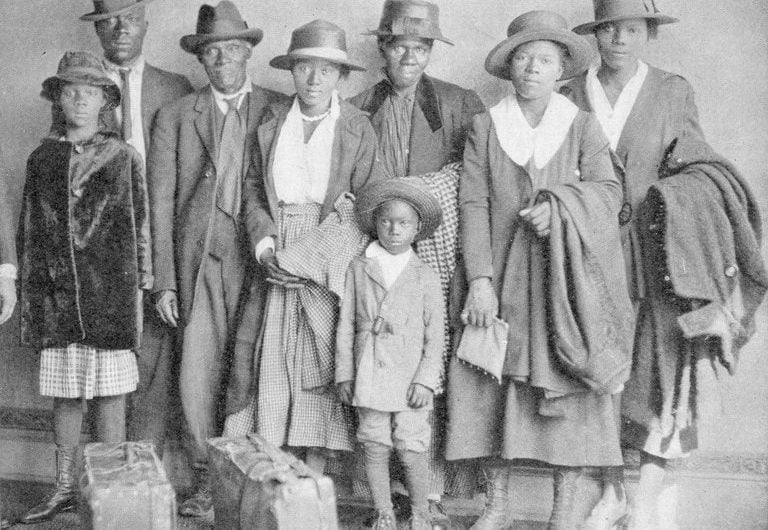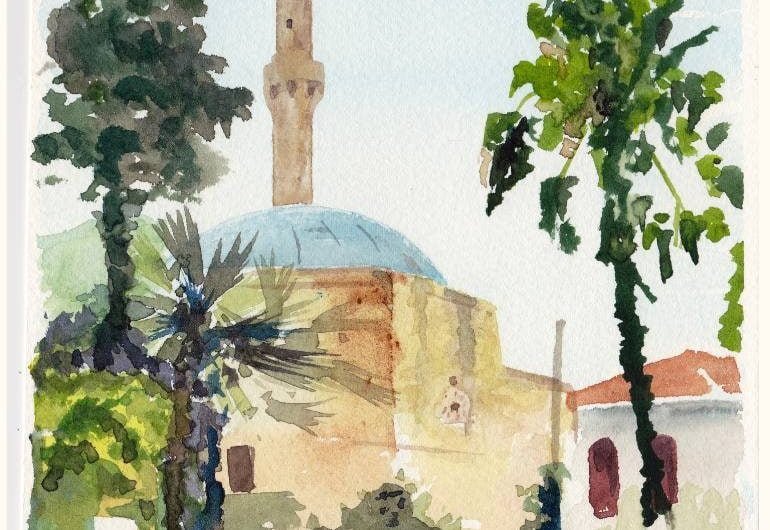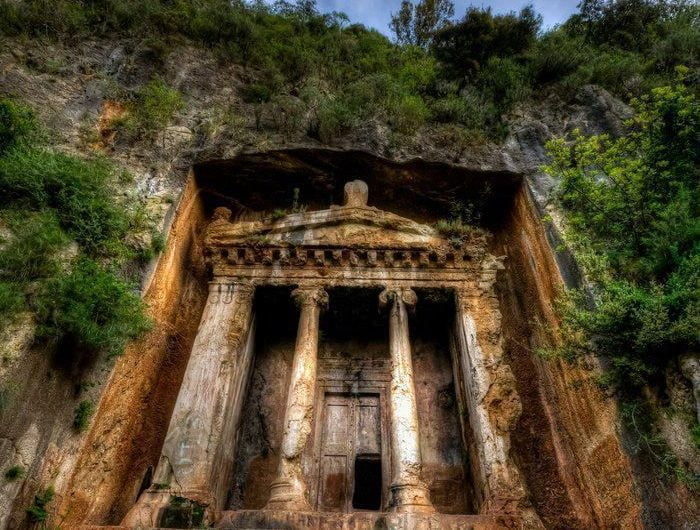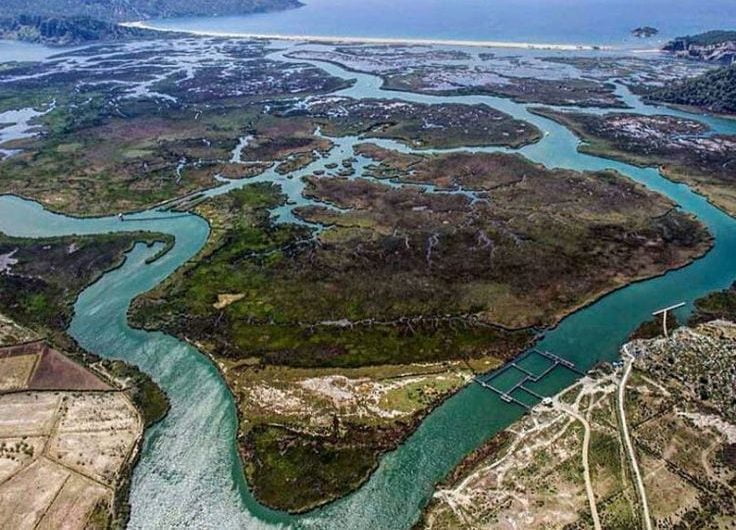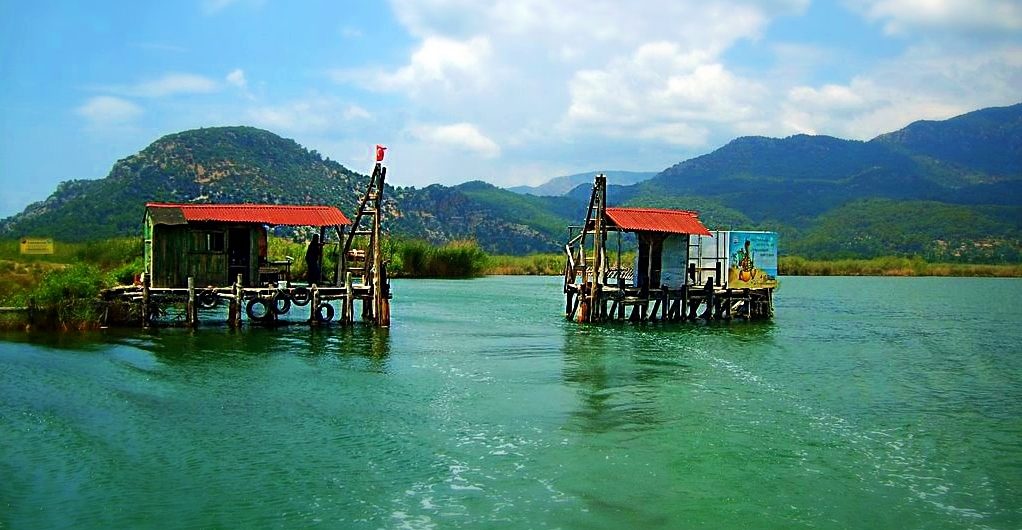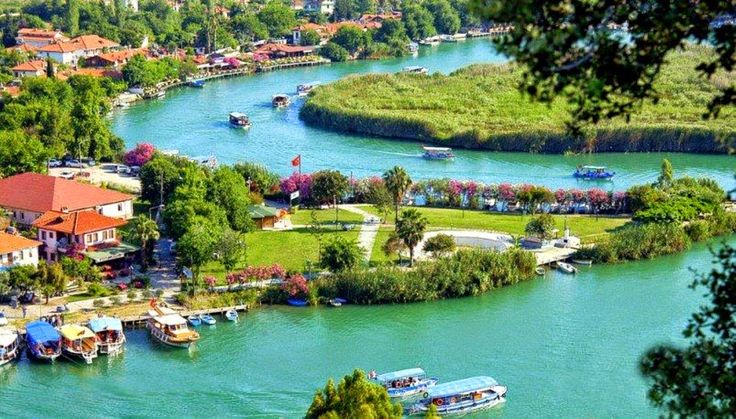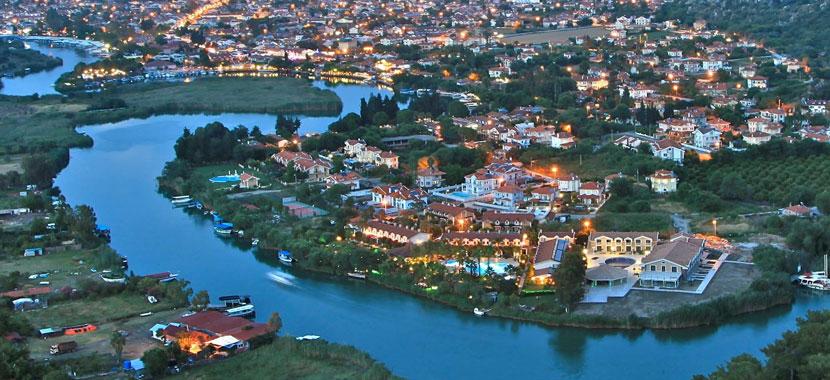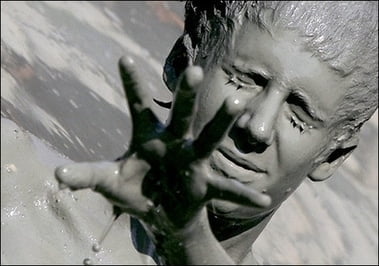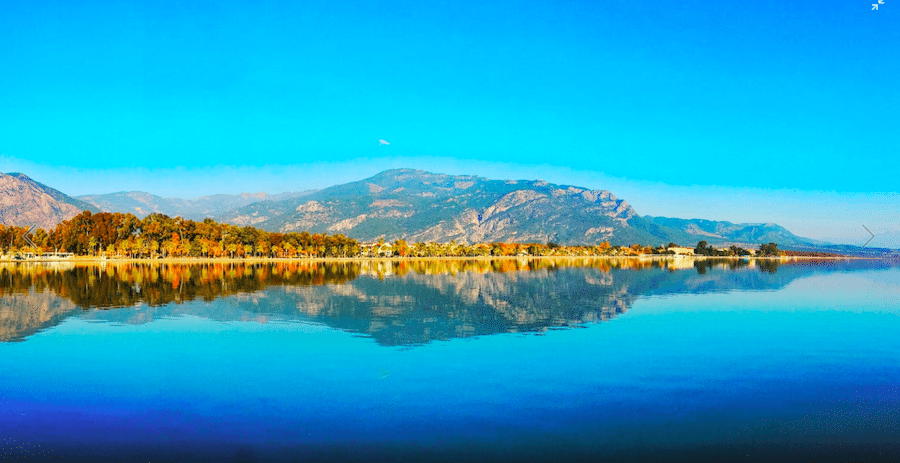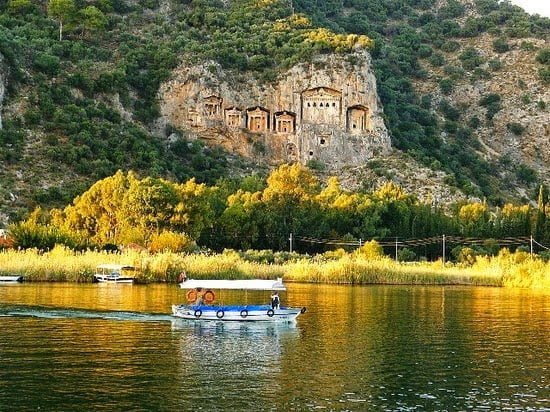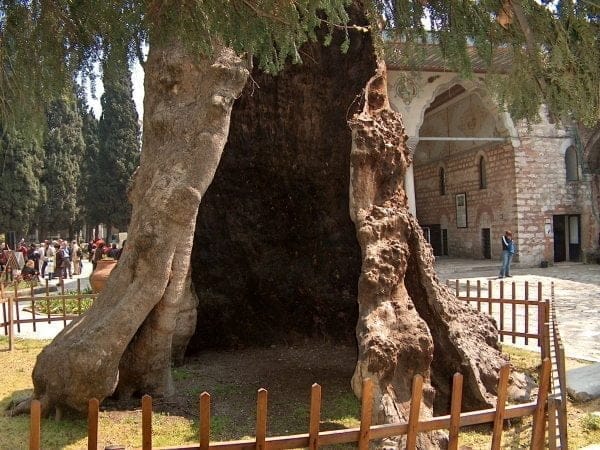Ready to dive into this limitless treasure? The Western Mediterranean Region that houses Dalyan is just like a paradise on earth with its long fine sandy beaches and picturesque ancient ruins.
Dalyan has a Mediterranean climate with plenty of sunshine, mild temperatures and a limited amount of rainfall. The climate of the Aegean is superbly mild. Summers are hot but rarely exceed 40°C, even during July and August. Spring and autumn are sunny, with blue skies and daily temperatures averaging in the high teens. Winters are mild with occasional precipitation.
As an avid reader and someone who thoroughly enjoys driving, longer car journeys to me either as passenger or vehicle controller are a real source of excitement as they provide a great opportunity to do these activities for a substantial period of time (try not to mix the two though that doesn’t tend to end well ;)) So when the VA HQ gang decided to head out on a road trip and trial the ideas we had for Reflections of Taurus I charged my iPad and got ready for some serious novel indulgence as we knew the initial leg of the journey would take us around three hours to complete.
Reading, writing and the importance of language is something that is attempted to be taught to most of us from a very young age. I’m one of life’s readers – give me a good book and you won’t see me for days. My sister on the other hand, is incredibly intelligent but has probably voluntarily read about three books in her lifetime. Some grasp it straight away, others take somewhat longer, some thoroughly enjoy the challenges of learning new words and how to use them both in the spoken and written form, others view it as nothing but necessity. Neither viewpoint can be seen as superior to the other as after all, the right to opinion is something that has been fought for over centuries.
The Dalyan Radar Hill Walk:
The walking route in Dalyan starting from Dalyan – Iztuzu Beach Road and ending nine kilometres away at Radar Hill is a walk which supplies breath-taking views. You will reach one of the four lakes of Dalyan delta, the Sulungur Lake after a short hike on the rocks around a small canyon when you turn to the west at the water tank after passing Gökbel, which is on the 7th kilometre of the Dalyan-Iztuzu road.
THE CAUNOS GUIDE
- HISTORY
- Caunos Guide, City walls of Caunos, Customs Regulations, Euploia, Heraklion, Persikon, Roman Bath, Sacred Stone, Stoa, The Acropolis, The Agora Fountain, the Apollo-Artemis Sacred Area, The Caunos Necrapolis, The Domed Basilica, The Harbour Agora, The Monopteros, The Palaestra Terrace, The Sacred Chamber of Aphrodite, The Small Fortress, The Terrace Temple, The Wind Measuring Platform
- 1 Comment
Caunos is not a large archaeological site, despite its being mentioned in ancient sources, but at its heart it shelters many mysteries that have been revealed to some archaeologists for the very first time. Every stone visible amongst the thick undergrowth and the remains of every structure tell the story of past ages to those who wish to understand and be acquainted with it. From the mountains to the Delta extending out to the sea, this panorama of natural history unfolding is one from which dreams are made.
The most ancient find of the Caunos excavations is a piece of a protogeomeric amphora dating back to the 9th century BC. In addition to this, the geometrical style designs of ceramic vessels patterned with concentric circles drawn between lateral bands or with semicircular motifs, were products of local pottery workshops and Herodotus’ comment that the people of Caunos were the natives of the land, brings to mind a settlement that dates far back. However, no architectural objects that can be dated to before the 4th century BC have been found in Caunos as yet.
While giving important information of Caria’s history and Caria’s cities during the Persian Wars, Herodotus, whose father was a Carian from one of the prominent families of Halicarnassus, and whose mother was a Cretan, speaks of Caunos saying: “Harpagos (Persian general), who brought Ionia to heel, marched against the Carians, Caunosians and Lycians.”This passage relates to the Persian invasion of Western Anatolia in 546 BC, with Caunos and its adjoining cities highlighting it as an independent region with a different language and different customs. In Chapter 1.72 of his History, Herodotus elucidates : “I believe that the inhabitants of Caunos are natives of the region. But they say that they came from Crete. Carian influence is traceable in their language, or vice versa…”
In the Anatolia of antiquity many people some of whom were natives of the land and others immigrants, lived in separate regions defined by geographical boundaries Historians and geographers of the First Era used to give the names of places according to their inhabitants. That is why Caria means Land of the Karians.” This country of mountains, highlands and plateaus cover the south of today’s Aydın, the southwest of Denizli and the entirety of Mugla (apart from Fethiye). This expansive area encompasses the lace-like Aegean coast, bays, peninsulas and islands.
Cevat Şakir Kabaagaçlı, known by his penname, “the Fisherman of Halicarnassus”, writes about the “Sea Islands” as follows: The Aegean coast is a place where bays and headlands embrace the sea… Noble peaks and great headlands fall into the sea, rise out to become islands. These headlands that dip in and out of the sea form a series of islands, just like a line of pearls.”
The blue crabs that were brought to Turkey for their economic value and released in lagoons in the Northern Aegean and the Saros Bay reproduced and multiplied. However, probably because they were not able to find the natural conditions they required in this region, they migrated to the Southern Aegean and inhabited the Güllük and Dalyan lagoons, extending right over to the Karadeniz fish trap in Taşucu. Today a large number of blue crabs are hunted in the Dalyan delta and are served by restaurants with various sauces and cooking methods.
Sea turtles are one of the oldest species alive on the planet earth. It is essential that they are protected and treated in case of injury in order to ensure the continuation of the species. In America, Mexico and Brazil, where the beaches are 40-50 km long, there are sea turtle research and treatment centres at almost all of the beaches. In the Mediterranean, there are Sea Turtle treatment centres in Italy, Greece and Israel. The fact that such a centre was founded in Dalyan, at Iztuzu Beach, and was chosen the “Best Open Air Zone of Europe’’, is significant in terms of promoting Turkey’s reputation.
Sea turtles have been living on earth for 110 million years, the human being, however, for only 2-3 million years. Of the eight species living in the world’s seas, five are present in the Mediterranean. It is estimated that only a limited number of individuals of the Leatherback Sea Turtle (Dermochelys coriacea), the Hawksbill Sea Turtle (Eretmochelys imbricata) and the Kemp’s Ridley Sea Turtle (Lepidochelys kempii) species enter the Mediterranean for nutrition or by mistake.
Holy Trees of the Gods and Goddesses
Most of the flora and fauna specimens you will come across when hiking in the Köycegiz-Dalyan Special Natural Reserve hold some very old secrets that they will whisper into the ears of those who wish to know and understand. Some plants were used medicinal in ancient times and even today by those who are practitioners of alternative medicine. Some of this plant life provides delicious food and spices enjoyed by the locals, while some others warn you that they are poisonous through their shiny colours.
The well-preserved architectural texture of the Dalyan and Köycegiz District centre, allows for a building plan in harmony with the natural and historical environment and is a successful application for the Special Environmental Preservation Corporation. Thanks to the wastewater purification plants of the two settlements, the aquatic ecosystem is protected from domestic waste pollution to a significant degree.
When the Ottoman Empire, despite its many victories was ultimately defeated in the first World War, the Moudros Treaty was unwillingly signed and the whole of Mugla Province was left to the Italian forces. Interested in the rich chrome deposits in Köycegiz and its vicinity, the Italians placed a small garrison in Köycegiz to control the region. Although in occupation, the Italians treated the locals and Ottoman officers fairly, (even turning a blind eye to the organisation of the National Forces), and quietly after the War of Independence.
In the 18th century large farms were established on miri land in order to meet the alimentary needs of the Ottoman palace, the army and horse breeding industry. The Dalaman Farm, which Sultan Selim III granted to his mother Mihrişah Sultan, was taken under the administration of the Foundations Corporation in 1820 and was purchased by the inheritors of Hacı Ali, Lord of Mugla, in 1836.
Although no ruins of architectural samples dated to before the century have survived, many graves were found during once 16th foundation excavations in the present town of Dalyan. Evid of a large cemetery indicates that there was once a deep-rooted and large settlement here. Another known fact is that in Dalyan, Turks and Greeks lived together until 1924, as is the case with many other coastal settlements of Anatolia.
After Turkish tribes invaded all the Christian lands to the north of Caria in the 1300s, Caunos experienced a severe population decline resulting from the economic implosion of maritime trade. Additionally, a malarial epidemic brought the city to its knees and it was finally abandoned. When the ancient city was heavily damaged by earthquakes, it was covered with earth that then grew a dense vegetation, hiding it from view. Eventually two new settlements budded within the vicinity.
Iztuzu and the Dalyan Gate is the magnificent final of the Köycegiz – Dalyan ecosystem and the place where the Dalyan River meets the Mediterranean. The threshold of this strait is the Delik Island that rises opposite to the Dalyan Gate and is covered with pine trees and scrub. Having a pier and a lighthouse at the side facing the Iztuzu beach, the Delik Island was a point of bearing showing sailors of the antiquity the entrance to the port of Caunos.
Yes, the delta is chaotic, but this incredible land that is in constant flux, reshaped by the divine order, inspires feelings of awe and joy. There are four lakes worthy of exploration, the first of these Sülüklü lake, was once the port of ancient Caunos, and the life blood of its economy. This busy harbour was frequented by the tilted-nosed, square-sailed ships of antiquity and was according to Strabo ‘protected with a chain across its entrance when necessary’.
The fish trap gate opens into an entirely new world. Here begins the Delta where the reeds spread out into a 1700 hectare area, massing like an enormous straw field that roots down to a brackish bed. The contours of the Delta are drawn by the reeds that filter the water through its roots providing a haven for small shrimps (crangon crangon). The young fish function as an important part of the ecosystem, moving like clouds as they travel together. Looking from above, you see this meandering chaos that lacks any describable shape.
Boats travelling from Dalyan to the Iztuzu Beach pass through the gate of a fish trap constructed of gauze stretched between poles, so as to block the fishes from one side to the other. A “Dalyan” in fishing terms, is controlled by a watchman’s post, before boats enter the delta’s labyrinth of reed islets and complicated waterways. It is customary to salute the fish trap watchman while going in and out of this gate, which is sunken below to provide passage for the boats and raised back in place immediately after the boat has passed.
he town of Dalyan has a history that probably dates back to the 13th century, but which received it’s status technically speaking during Süleyman the Magnificent’s Rhodes campaign. More recently, about 30 to 40 years ago, this settlement turned village was almost exclusively dependent on agriculture and fishing for its sustenance.
Spread out all along the river banks, and dotting the Delta like an archipelago, the tall plumes of reeds whisper a very old story in the soft breezes. This is the tragic tale told by Ovid in his masterpiece “The Metamorphoses”, about the birth of the Calbis River and legendary King Caunos, who founded the ancient city named after him.
According to this legend, Caunos and Byblis, twin children of King Milatos, were very attached to each other.
Archaeological research has shown the existence of an ancient sanctuary dedicated to the Goddess Leto in the vicinity of the Sultaniye thermal springs. According to Greek myth Leto, daughter of the Titans Koios and Phoibe, gave birth to the twins Apollo and Artemis of the Greek pantheon following her union with Zeus. The most important cult centre of this mother goddess of Anatolia, especially of the Lycian origin and her two children is the Letoon sanctuary close the Xanthos, where each have a dedicated temple.
Cutting through the water to the accompaniment of the rhythmic sound of the engine, your boat takes you to the Sultaniye thermal springs, where Ölemez Mountain reaches the shore of the lake from its steep peak crowned by the walls of the Imbroz castle built by the inhabitants of Caunos. According to a legend connected with the name of this majestic mountain covered with the dark green of Turkish Pine forests, Lumen the Wise came here while in search of the herb of immortality and while taking in the vice, he said: “One could not die here even if one wanted to.”
Leaving a backwash of white foam behind it, the boat you will get on at the Köycegiz quay will take you on a trip on an extraordinary lake with delightful resting points. The second largest lake of the Aegean Region after Bafa with its surface of 5500 hectares, the Köycegiz Lake is situated in a depression that was a lagoon in old times. The mountainous terrain surrounding the lake that has alluvial plains to its northeast and southwest has a steep profile cleaved by deep valleys.
Looking from the thick shadows of eucalyptus and palm trees to the serene shores of the Köycegiz Lake, you find yourself amidst to the sweetest of dreams… The wish to be one with this magnificent nature, to explore every corner of it engulfs you. The prettiest trip one can take is the boat trip to the Dalyan River that passes the Köycegiz Lake and connects to the sea or to the labyrinthine waterways of the delta and to the silken sand of the Iztuzu beach washed with the waves of the Mediterranean.
The Köycegiz district, stretching at the side of the glittering green water of the Köycegiz Lake like an island of pack, is surrounded by the Mediterranean pack of the Western Taurus mountains to its north. The Olemez Mountain which is an extension of the Cankurtaran Mountain, the Kızlan mountain forming the last peaks of the Sandraz Mountains in the north and the Pandaluz Mountain to the northeast create a magnificent scene with these thick woodlands.
After Seljuk Sultan Alparslan’s victory over the Byzantine army on Manzikert plain in 1071, Anatolia became the Turkish homeland. Kilic Arslan II added almost all of Caria to the lands of the Selcuk State with his raids during 1093-1095. The settling of Turkish tribes coming in waves from central Asia in Western Anatolia against the Byzantine border accelerated this spread. Anatolia was shared among small emirates that became independent during the chaotic period which started when the Mongols took Anatolia after the Anatolian Selcuks were defeated by the Mongol Ilkhanate in the battle of Kösedag in 1243 and lasting until 1300. This state of affairs continued until Sultan Mehmed II, the Conqueror united Anatolia until Ottoman rule.
The birth of a unique ecosystem consisting of Köycegiz Lake, the Dalyan River and Delta and the Iztuzu Beach is part of an ancient and great tale concerning the formation of the earth’s crust that started in the Mesozoic Era, 251 millon years ago, and continues today with the changes caused by terrestrial forces.
On October 30, 1918, aboard the British battleship Agamemnon, anchored in the port of Mudros on the Aegean island of Lemnos, representatives of Great Britain and the Ottoman Empire sign an armistice treaty marking the end of Ottoman participation in the First World War. The Armistice of Mudros, which was concluded on October 30, 1918,
İmam bayıldı is a Turkish dish made from eggplant cooked with olive oil and filled with onions, garlic, and tomatoes and served at room temperature. It translates as the “imam swooned,” suggesting that the dish was so delicious that the imam, or prayer leader of the mosque, fainted at the sight and taste of it.
I have a confession to make……. I love trees. Any trees will do but what I really love are ancient trees. Old monuments that have stood the test of time. I struggle to get my head around the amount of history these living beings have witnessed. Ancient Trees Where I come from in Sussex we have
There are new batches of cherries in the markets at the moment. On our trip to Mugla this week I bought far too many. Now what to do with my glut of cherries? Baked Cherry Cheesecake is the answer. Ingredients 225 grams of biscuits (digestives are good but you can use any plain biscuits) 1
Everything you need to know about Ramadan: Ramadan is the most sacred month of the year for Muslims During the entire month of Ramadan, Muslims fast every day from dawn to sunset. Many also pray more frequently, give more to charity and study the Quran more deeply. It is a time for families and celebrations.





